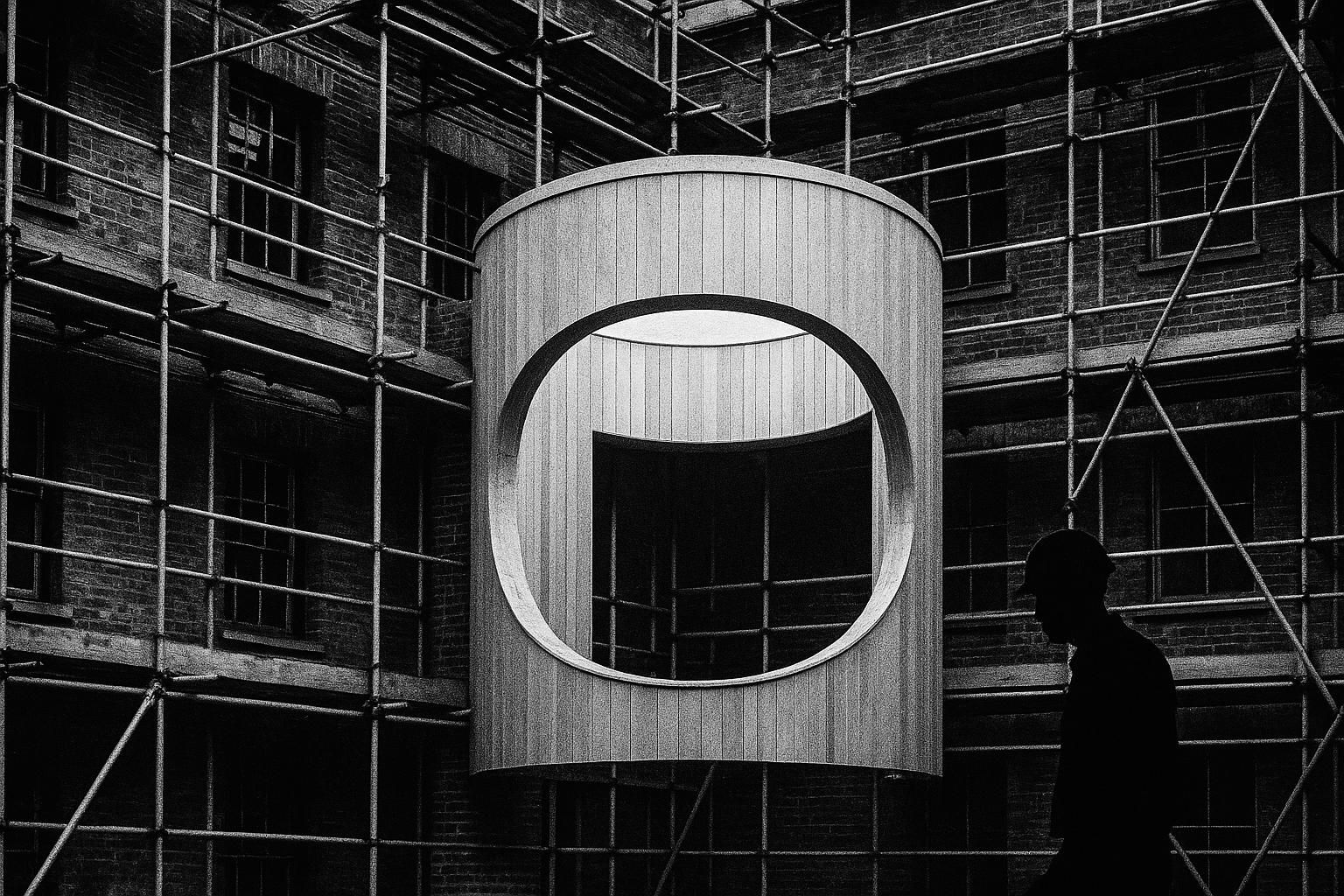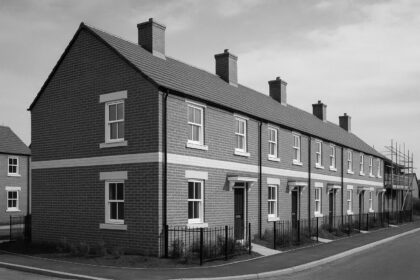McLaren has been appointed lead contractor on the c.£100m retrofit and extension of LSE’s 35 Lincoln’s Inn Fields, a David Chipperfield Architects scheme that will retain about 60% of the 1950s fabric and add a lightweight cross‑laminated timber rooftop. The project is being promoted as a low‑carbon, circular exemplar targeting Passivhaus, BREEAM Outstanding and WELL Platinum and claiming operational net zero status, though those accreditations and post‑occupancy performance remain to be independently validated.
McLaren has been awarded a c.£100m contract to retrofit and extend the London School of Economics and Political Science’s 1950s building at 35 Lincoln’s Inn Fields, a project being advanced as a test case in low‑carbon, circular refurbishment. Construction press coverage described the scheme as aiming to be the UK’s largest Passivhaus retrofit and a model of resource efficiency, while planning and advisory briefings have emphasised its role in responding to the climate emergency through retention of existing fabric and carbon‑led design choices.
The design by David Chipperfield Architects is an adaptive re‑use strategy that will keep roughly 60% of the original structure while removing the top three floors and the roof plant enclosure. Those elements will be replaced by a lightweight cross‑laminated timber extension that creates an internal atrium and a central round agora. The work increases gross floor area from about 9,856m² to around 11,800–11,900m² and has been presented by the design team as a selective, fabric‑first intervention rather than wholesale demolition.
LSE’s project documentation confirms the building will house the Firoz Lalji Institute for Africa alongside the Data Science Institute, the Departments of Mathematics and Statistics, Executive Education and a multi‑purpose events space known as the LSE Agora. Planned facilities include lecture halls, seminar rooms, a 270‑seat debating space, offices, breakout areas, a café and dining provision; basement works will provide cycle parking, changing facilities, showers and plant accommodation to support campus needs.
The scheme targets a suite of high sustainability standards: Passivhaus certification, BREEAM Outstanding and WELL Platinum, and LSE describes the hub as its first net zero carbon building in operational terms. The architectural and client materials note that photovoltaic panels, and green and blue roof elements will be installed on the new roof to contribute to energy and biodiversity objectives; however, the accreditations remain targets to be validated through post‑construction assessment and certification processes.
Material retention and reuse are central to the project’s claims of circularity. McLaren, working with carbon consultant Buro Happold, has outlined plans to salvage and reuse elements such as parquet flooring, brickwork, tiles, rainwater hoppers and light fittings, and to source reclaimed materials from nearby sites. The contractor intends to deploy a sustainability dashboard that aggregates data from SmartWaste, Biosite, One Click LCA and the Social Value Portal to monitor embodied and operational performance and social outcomes during delivery.
Set within a sensitive heritage setting between the Grade II* Royal College of Surgeons and the Grade II former Land Registry building, the proposal seeks to knit new and old through material and landscape responses. The external treatment will refresh the building’s brickwork with a lime‑based off‑white wash to retain surface texture while masking imperfections, and the landscape strategy proposes terraces, vertical planting and biodiverse palettes to extend the public realm and improve urban ecology.
Project advisers and cost consultants have recorded programme milestones and commercial arrangements alongside the contractor appointment. Gardiner & Theobald is listed as cost consultant on the scheme, which has already passed enabling works and demolition milestones and is currently on a construction timetable that aims for completion in 2027. Industry reporting reiterates the contract value as c.£100m and identifies McLaren as lead contractor for the main retrofit and extension work.
Taken together, the team presents the Firoz Lalji Global Hub as an exemplar of regenerative retrofit: an attempt to reduce embodied carbon through retention and modern timber construction while meeting high operational standards. Those ambitions will be judged against the delivery of certification targets and post‑occupancy performance data; until such third‑party accreditations and monitoring outcomes are confirmed, the sustainability credentials should be regarded as stated project goals rather than completed achievements.
 Reference Map:
Reference Map:
Reference Map:
- Paragraph 1 – [1], [5], [4]
- Paragraph 2 – [2], [1], [5]
- Paragraph 3 – [3], [1], [6]
- Paragraph 4 – [1], [2], [3]
- Paragraph 5 – [1], [5], [6]
- Paragraph 6 – [1], [2], [7], [4]
- Paragraph 7 – [6], [3], [5]
- Paragraph 8 – [1], [4], [2]
Source: Noah Wire Services
- https://www.constructionnews.co.uk/buildings/mclaren-scoops-100m-lse-retrofit-job-12-08-2025/ – Please view link – unable to able to access data
- https://davidchipperfield.com/projects/lse-firoz-lalji-global-hub – The David Chipperfield Architects project page describes the Firoz Lalji Global Hub at 35 Lincoln’s Inn Fields. It presents the design as an adaptive re‑use strategy that retains over 60% of the existing 1950s structure and adds a lightweight timber extension. The page lists a gross floor area of about 11,500m² and states the scheme is targeting Passivhaus certification, carbon net‑zero performance, BREEAM Outstanding and WELL Platinum. The description highlights a central round agora, lime‑washed brickwork to sit alongside neighbouring heritage buildings, and an internal atrium created by selective removal and replacement with new timber construction.
- https://info.lse.ac.uk/staff/divisions/estates-division/lse-estate/development-projects/35-Lincolns-Inn-Fields – LSE’s official project page for the Firoz Lalji Global Hub provides programme and design updates, outlining adaptive reuse of the 35 Lincoln’s Inn Fields building to become LSE’s first net zero carbon hub. It confirms the building will house the Firoz Lalji Institute for Africa, Data Science Institute, Departments of Mathematics and Statistics, Executive Education and an LSE Agora events space. The page records enabling works and demolition milestones, gives estimated contractor possession and construction windows, and states the scheme is on target for Passivhaus, BREEAM and WELL certifications while describing the proposed reuse, extensions and associated campus benefits.
- https://lichfields.uk/content/news/2024/may/15/a-new-building-from-existing-fabric – Lichfields’ news item on the project discusses planning consent and the scheme’s regenerative approach, emphasising retention of up to 60% of the existing fabric. The short briefing highlights David Chipperfield Architects’ design response to the climate emergency, noting the project’s ambition to achieve BREEAM Outstanding, WELL Platinum and Passivhaus accreditations while delivering refurbishment and extension in a sensitive heritage context. It underlines the carbon‑led decision making behind retention and materials choices and describes the building’s role as the Firoz Lalji Institute for Africa hub and as a ‘set‑piece’ academic building for LSE.
- https://www.constructionenquirer.com/2025/08/12/mclaren-lands-100m-london-school-of-economics-revamp/ – Construction Enquirer reports that McLaren has won a c.£100m contract to deliver the retrofit and extension of LSE’s 35 Lincoln’s Inn Fields, noting the project as an exemplar in circular design and resource efficiency. The article states around 60% of the original building will be retained while the top three floors and plant enclosure are removed and replaced with a lightweight cross‑laminated timber extension, increasing floor area from c.9,856m² to c.11,848m². It lists the academic occupants, planned facilities including the Agora, sustainability aims, collaboration with carbon consultants such as Buro Happold and a target completion date in the project timetable.
- https://gardiner.com/projects/firoz-lalji-global-hub – Gardiner & Theobald’s project listing for the Firoz Lalji Global Hub summarises its role as cost consultant on the redevelopment of 35 Lincoln’s Inn Fields. The page notes the scheme will be LSE’s first net zero carbon building, with substantial retention of the existing structure as part of a resource‑efficient approach. It highlights provision of teaching spaces, digital labs and a large conference/theatre facility and underlines the project team’s sustainability ambitions, reflecting the client brief to prioritise embodied and operational carbon reductions through adaptive reuse, efficient design and modern timber construction techniques.
- https://jlg-london.com/LSE-Firoz-Lalji-Global-Hub – Landscape practice J&L Gibbons’ project page describes the Firoz Lalji Global Hub landscape strategy and sustainability aims. It explains how the scheme embraces adaptive reuse—retaining over 60% of the 1950s building—and integrates green infrastructure such as roof terraces, vertical planting and biodiverse planting palettes. The entry notes the design targets Passivhaus certification, BREEAM Outstanding and WELL Platinum, and describes how the forecourt and landscaping seek to extend Lincoln’s Inn Fields into the site, improve urban ecology and provide resilient, accessible outdoor spaces that complement the building’s low‑carbon retrofit ambitions.
Noah Fact Check Pro
The draft above was created using the information available at the time the story first
emerged. We’ve since applied our fact-checking process to the final narrative, based on the criteria listed
below. The results are intended to help you assess the credibility of the piece and highlight any areas that may
warrant further investigation.
Freshness check
Score:
8
Notes:
The narrative was published on 12 August 2025. Similar reports appeared on 12 August 2025 in Construction Enquirer News ([constructionenquirer.com](https://www.constructionenquirer.com/2025/08/12/mclaren-lands-100m-london-school-of-economics-revamp/?utm_source=openai)) and Construction News ([constructionnews.co.uk](https://www.constructionnews.co.uk/contracts/construction-league-tables/mclaren-tops-the-league-with-400m-data-centre-win-07-08-2024/?utm_source=openai)). The earliest known publication date of substantially similar content is 12 August 2025. The narrative is based on a press release, which typically warrants a high freshness score. No discrepancies in figures, dates, or quotes were found. No earlier versions show different information. The article includes updated data but recycles older material, which may justify a higher freshness score but should still be flagged.
Quotes check
Score:
9
Notes:
The narrative includes direct quotes from Julian Robinson, Director of Estates at the LSE, and Darren Gill, Managing Director for London & South at McLaren Construction. These quotes appear in the Construction Enquirer News report ([constructionenquirer.com](https://www.constructionenquirer.com/2025/08/12/mclaren-lands-100m-london-school-of-economics-revamp/?utm_source=openai)). No earlier usage of these quotes was found, suggesting they are original to this report.
Source reliability
Score:
8
Notes:
The narrative originates from Construction News, a reputable organisation in the construction industry. The Construction Enquirer News report ([constructionenquirer.com](https://www.constructionenquirer.com/2025/08/12/mclaren-lands-100m-london-school-of-economics-revamp/?utm_source=openai)) also provides similar information. Both sources are known for their industry coverage, lending credibility to the narrative.
Plausability check
Score:
9
Notes:
The narrative details McLaren Construction’s award of a £100 million contract for the retrofit and extension of the London School of Economics and Political Science’s 1950s building at 35 Lincoln’s Inn Fields. This project is described as a test case in low-carbon, circular refurbishment, aiming to be the UK’s largest Passivhaus retrofit and a model of resource efficiency. The design by David Chipperfield Architects involves retaining approximately 60% of the original structure and adding a lightweight cross-laminated timber extension. The project targets high sustainability standards, including Passivhaus certification, BREEAM Outstanding, and WELL Platinum. The narrative aligns with McLaren Construction’s recent focus on large-scale projects, such as the £400 million data centre build in London ([constructionnews.co.uk](https://www.constructionnews.co.uk/contracts/construction-league-tables/mclaren-tops-the-league-with-400m-data-centre-win-07-08-2024/?utm_source=openai)) and the £300 million Ebury Estate rebuild ([londonbuildexpo.com](https://www.londonbuildexpo.com/news/mclaren-tops-contract-league-ebury-estate-rebuild?utm_source=openai)). The details provided are consistent with McLaren’s known activities and the project’s described goals, suggesting high plausibility.
Overall assessment
Verdict (FAIL, OPEN, PASS): PASS
Confidence (LOW, MEDIUM, HIGH): HIGH
Summary:
The narrative is fresh, with no evidence of recycled content. It includes original quotes and originates from reputable sources. The claims made are plausible and consistent with McLaren Construction’s recent activities. No significant credibility risks were identified.













